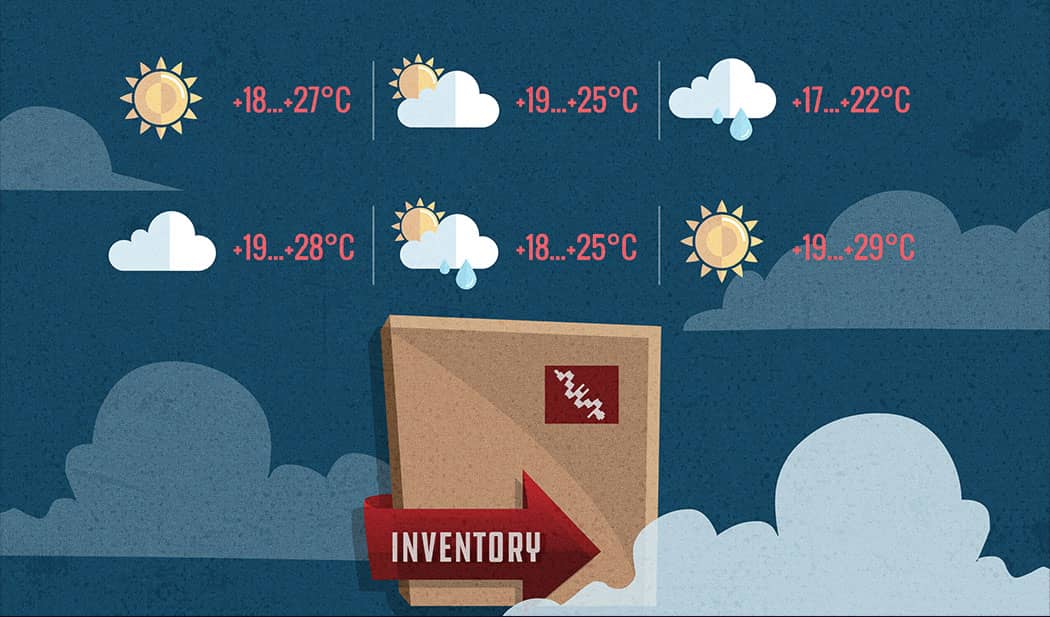How Does Demand Forecasting Relate to Inventory Management?

How Does Demand Forecasting Relate to Inventory Management?
(Dramatic narrator voiceover)
In a world where inflation has become the order of the day, optimizing your parts inventory is a matter of life and death for your profit margins.
Are you willing to bear losses by taking the easy way out? Or will you rise up and take a leap of faith?
Coming to a blog near you: the gist of how demand forecasting changes the narrative.
Concept of Demand Forecasting
Demand forecasting is a spot-on prediction of the future demand for a product or service using relevant information like historical data and market analysis. With this ability to basically predict the future, you can manage your shop’s costs and parts inventory and streamline your supply chain management.
Take some time and consider the endless benefits of adopting demand forecasting for your heavy duty repair shop. Like, for example, gaining and retaining more customers when you can quickly and efficiently meet their demands.
Demand Forecasting Techniques
Choosing the right demand forecasting technique is critical to making your shop reach optimal status.
And that’s what it’s all about in the first place, right? If you’re going to do it, why not do it right?
Ready your shop to gain the next level by using these demand forecasting techniques:
Quantitative Forecasting
When it comes to putting the numbers together, this technique deserves first place. Take a look at historical data to predict what your future demand will look like. You can leverage patterns and trends in your previous sales to predict the future of your demand.
In other words, put statistical approaches like regression and time series analysis into play. All you need is a clean record of historical sales.
Admittedly, this can be harder than it sounds if you’re not actually keeping track of your past purchases. Or your definition of “keeping track” is a pile of receipts and email order confirmations.
(Hint: something like Fullbay’s inventory management feature makes this way, way easier)
Sales Trends and Historical Sales Data
Evaluate future demands using trends in sales over a period of time. This may be annual, monthly, quarterly, or so on. Leverage analysis of your shop’s sales over a given time based on price movement, trade volume, and whatnot for forecasting.
Seasonal Trends
In demand planning, seasonal trends are a major consideration for any repair shop. You probably already have a feel for how various seasons influence the demand for heavy-duty trucks. Think extreme weather conditions like winter season, construction periods, or even agricultural seasons.
Relationship Between Demand Forecasting and Inventory Management
Inventory management keeps your shop running smoothly and empowers you to make strategic decisions. Instead of eyeballing your inventory and taking a wild guess at what you have in stock, you can see everything at a glance and use those insights to restructure as needed.
But does it really end there? How much can it achieve on its own?
(Admittedly, a lot. There are so many reasons you need an inventory management system in your shop.)
If you think of inventory management as a type of engine that keeps the shop organized and running efficiently, then demand forecasting is a pedal that helps you rev that engine up and down so it can better adapt to the twists and turns of the market.
Influencing Inventory Levels
Demand forecasting directs your inventory decisions in a more accurate way and conquers inventory in your shop. Rather than just restocking parts when they’re low, you can adjust over time to be more in line with the trending demands of your customers—with no excesses and no shortages.
Forecasting for Inventory Planning
On its own, web-based inventory management might alert you that you’re low on a certain part and need to order more. Combined with demand forecasting, you’ll realize you’re low and reordering to normal stock levels won’t cut it, since the busy season is about to kick off.
While planning your inventory, forecasting provides you with seasonal insights that might affect which parts and how many you reorder. You don’t need to worry about over-ordering and wasting resources or, alternatively, under-ordering (and disappointing customers) because you’re afraid of wasting resources.
Really, can you imagine anything more annoying than running out of a part when you literally just ordered them?
Setting Safety Stock Levels
As much as you’d like to regulate your inventory to the lowest risk possible, economic fluctuations that you can’t control can come into play. Demand forecasting helps you expect the unexpected and maintain safe stock levels to the best of your ability.
The Role of Forecasting Tools in Inventory Management
Everyone on board for demand forecasting? The next step is picking out a forecasting tool that gets you the insights you need.
Some inventory management softwares can integrate with advanced algorithms and data analysis techniques to help with accurate forecasting. In turn, these forecasting models help predict future demands.
Some of these tools include Inventory Planner, Logility, and Infor, just to name a few. Depending on the tool, these forecasting solutions can even help with supply chain and warehouse management, predicting dynamic market conditions, AI-driven analytics, and more.
Fullbay can help here, too. Velocity reporting lets you know how fast parts are flying off the shelves, and we keep a thorough log of your order history so you can sort and filter to look for trends.
Forecasting tools don’t just enhance your inventory management—they also support long-term planning. Gaining insights into evolving market trends gives you a vantage point for forecasting growth and future operations, helping you make better decisions about when it’s a good market to expand your business and open another truck repair shop, for example.
Your shop’s future growth hinges on the decisions you make now. The biggest enterprises out there know to prioritize analytics that help them make smart and timely decisions, resource allocation that helps them operate more efficiently, and organized management that helps them scale. What is it going to be for you?
Embark on Your Next Journey with Fullbay
Maybe you went into this thinking that demand forecasting sounds a bit like fiction. I mean, predicting the future? But incorporating these insights can be huge for your shop’s inventory and overall operations.
Besides…
(Dramatic narrator voiceover again)
In the climactic battle against wasted resources and missed opportunities, only those armed with foresight and strategy will prevail. Demand forecasting is your shield, and Fullbay’s inventory management is your sword! Embark on our free demo today.

